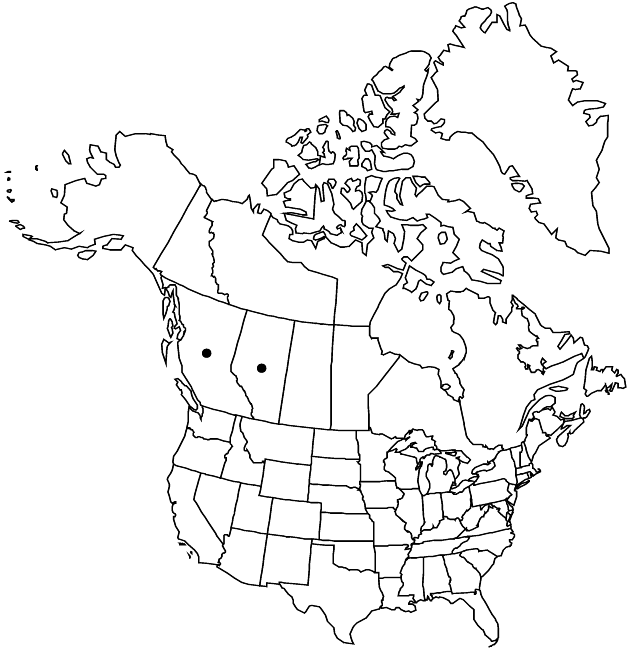Erigeron trifidus
Fl. Bor.-Amer. 2: 17, plate 120. 1834.
Perennials, 3–8 (–10) cm; taprooted, caudex branches rhizomelike, relatively thick to thin, woody. Stems mostly erect, hispido-hirsute, sometimes woolly distally, minutely glandular. Leaves basal (persistent); blades spatulate to obovate-spatulate, 8–30 × 3–6 mm, margins usually 3-lobed, sometimes 2-lobed or entire (lobes 3–8 mm, lanceolate to narrowly ovate or oblong, apices usually acute), ultimately entire, coarsely ciliate, faces hirsute, minutely glandular. Heads 1. Involucres 8–12 × 10–15 mm. Phyllaries in 2–3 series (purplish or purple-tipped), hirsute to villoso-hirsute, glandular. Ray-florets 20–40; corollas white to pinkish, 10–15 mm, laminae not coiling or reflexing. Disc corollas 3.5–4.5 mm. Cypselae 2–2.5 mm, 2-nerved, faces sparsely strigose; pappi: outer of setae, inner of 15–20 bristles (not twisted). 2n = 45.
Phenology: Flowering Jul–Aug.
Habitat: Dry talus and scree slopes in upper alpine zone
Elevation: ca. 2600–3400 m
Discussion
Erigeron trifidus has been treated as a synonym of E. compositus; caudex branches of the latter usually are relatively thick and short, compared to those of E. trifidus, which are thinner and are not covered with persistent leaf bases. Leaves of E. trifidus are consistently 3-lobed. Erigeron trifidus was hypothesized (J. G. Packer 1983) to be of hybrid origin (based on its polyploid chromosome number and sterile pollen), with E. lanatus and E. compositus as the most likely parents (based on intermediate morphology and sympatry of the putative parents).
Selected References
None.
